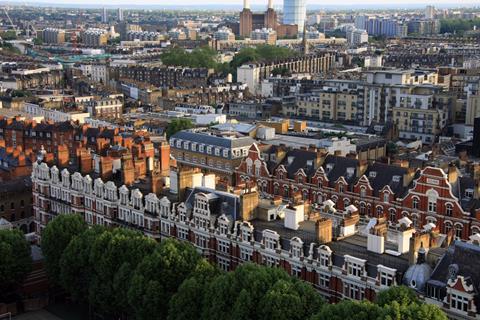Research commissioned by Mayor says adaptations would also lower carbon emissions
A city-wide programme to retrofit roofs could keep Londoners cool as temperatures rise due to climate change.
An estimated 387 excess deaths were recorded in the capital last year, with temperatures hitting 40 degrees in the summer.

According to a report by Arup for the Mayor of London, simple adaptations at scale would lower temperatures inside and out, with positive impacts for health and carbon emissions.
Increased temperatures are exacerbated in large cities like London by the urban heat island effect, with cities heating at twice the rate of average global warming according to the Resilient Cities Network.
By 2050 average temperatures in London are predicted to increase 1.2°C in winter and 2.6°C in summer, compared with the period 1981-2010.
According to the report, reflective roofs have proved effective in reducing overheating in buildings in cities such as New York, Toronto and Madrid, as well as helping mitigate the urban heat island effect.
A variety of different methods for increasing reflectivity of roofs are available, according to the report, including coatings and reflective tiles.
Arup director Becci Taylor said: “We have to prepare for the impact of climate change now. Urban heat risk is particularly acute in large cities like London and while there is no time to waste in to reducing our emissions, we must align these actions with adaptations to a changing climate with a focus on those most vulnerable to its impact.
“There is a compelling case to urgently retrofit existing buildings at scale to reduce inequalities and the risks caused by climate change and rising temperature in our city. This ground-breaking, action-focused report makes it clear how buildings of all types and sizes can be ‘future-proofed’, in order to play a role in tackling this important issue.”
















1 Readers' comment